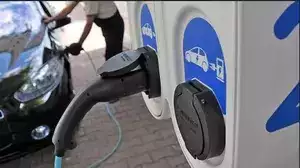
The company, a major producer of high-grade nickel, said that the launch "is expected to lay the groundwork for future projects aimed at establishing production facilities in the battery materials sector."
Nornickel, which reported a 22% fall in first-half profit on Aug. 23 due to weak nickel prices, logistical difficulties, and issues related to cross-border payments, is closely looking at the EV batteries sector.
Nornickel's Vice President for Innovations, Vitaly Busko, said the move to open an R&D centre also "aligns with Russia's goals of ensuring a full-cycle battery production for electric transportation."
Busko told the Russian media at the launch event that the company will decide within one year whether to open a cathode active materials production facility. He said that the company is looking for a possible location for such a facility.
Nornickel's CEO, Vladimir Potanin, said in April that the company planned to develop a nickel supply chain in the EV batteries sector and create joint ventures with Chinese EV battery producers.
Potanin also named Russia's nuclear power monopoly, Rosatom, as a potential partner for an EV battery venture in Russia.
The company also said it is looking for ways to integrate in the global EV battery production as a way to weaken the impact of the Western sanctions against Russia on its business.
In July, sources told Reuters that Nornickel is in talks with several Chinese battery companies to build a plant jointly producing nickel material from Russian semi-finished products.
EV batteries are charged and discharged by the flow of lithium ions between the graphite-containing anode and the cathode. Cathodes contain nickel, which delivers high energy density, allowing the vehicle to travel further.
Disclaimer: The copyright of this article belongs to the original author. Reposting this article is solely for the purpose of information dissemination and does not constitute any investment advice. If there is any infringement, please contact us immediately. We will make corrections or deletions as necessary. Thank you.





